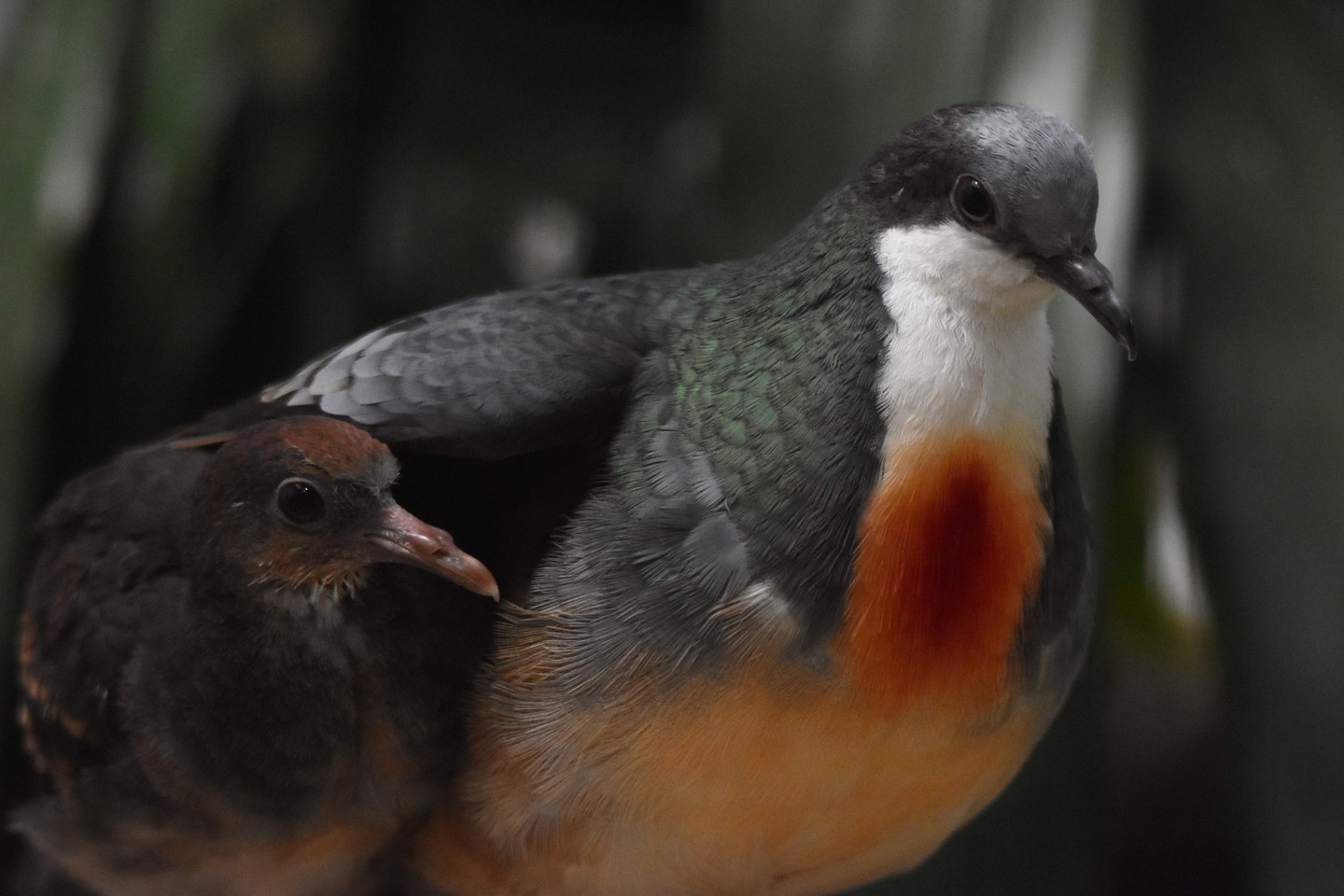- Introduction to the Luzon bleeding-heart dove and its distinct features.
- Habitat and lifestyle of the Luzon bleeding-heart dove.
- Diet and nutrition essential for the chicks’ development.
- Role of zoo management in conservation efforts.
- Challenges and importance of wildlife conservation.
The Luzon bleeding-heart dove is a captivating species found primarily on the island of Luzon in the Philippines. Distinguished by its unique plumage, the adult dove boasts a notable ruby-red patch on its chest, resembling a bleeding wound. This feature not only makes it an intriguing bird but also draws attention to its conservation status. Recently, two Luzon bleeding-heart dove chicks hatched at the Bird House, marking a significant moment for both the institution and the species.
Juvenile Luzon bleeding-heart doves differ greatly from their adult counterparts. While the adults display bright, vibrant plumage, the chicks are covered in dark brown feathers. This coloration helps camouflage them from predators, an important adaptation for their survival in the wild. Observing these chicks can offer valuable insights into the developmental stages of this species.
In the controlled environment of the zoo, these young doves receive a specialized diet crucial for their growth and health. Their meals comprise chopped greens, fruits, and specially formulated feed pellets enriched with vitamins. This blend mirrors the nutritional profile they would naturally seek out in their native habitat and supports their physical development and immune system.
Zoo management plays a crucial role in the conservation of species like the Luzon bleeding-heart dove. By integrating breeding programs, zoos can provide safe environments for endangered birds to thrive. These facilities not only facilitate controlled breeding but also offer educational platforms for the public to learn about such species and the pressing need to protect them.
Wildlife conservation is an ongoing challenge that requires dedicated efforts. The Luzon bleeding-heart dove, facing habitat loss and hunting pressures in the wild, benefits greatly from conservation programs. Zoos and similar institutions collaborate with global organizations to implement strategies aimed at preserving these birds. Such efforts include habitat restoration and the reintroduction of species into safer areas.
The hatching of two Luzon bleeding-heart dove chicks at the Bird House is more than just an addition to their aviary—it’s a step forward in preserving an endangered species. Understanding the unique attributes and needs of these doves can drive further interest and action in wildlife conservation. By appreciating their beauty and plight, individuals can contribute to broader efforts to save such remarkable creatures from the brink of extinction.
*****
Source Description
They might not look ‘broken hearted’ yet, but there are two Luzon bleeding-heart dove chicks at the Bird House!
This pair hatched last month and can be spotted in the public habitat now where they’ll stay with their parents for the next few months.
While adults of this species are known for the ruby red mark on their chest that looks like a wound, juveniles have dark brown feathers.
These chicks eat a nutritious mix of chopped greens, fruit, specialized feed pellets and vitamins—just what a healthy bird needs!


